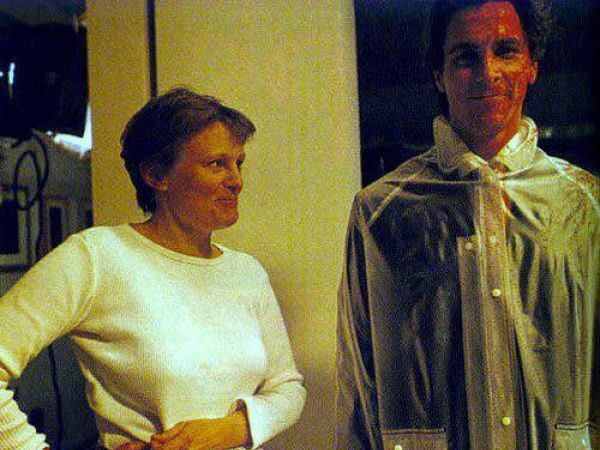Please enjoy this delicious tea.
“American Psycho,“ the 1991 book, was written by Bret Easton Ellis. With a cursory google search, you can find the novel described as an exploration of the “incomprehensible depths of madness” and a satirical expose on the yuppie culture of the 80s. It’s written from the first-person perspective of Patrick Bateman, a Wall Street businessman by day and serial killer by night.
The film of the same name, released in 2000, follows the plot of the book loyally, cutting some of its content for both the sake of time and the palette of the audience, which could only be expected to tolerate so much gratuitous violence in one two hour film. The other significant difference between the novel and the movie, of course, is that the latter was written and directed by women.

The screenplay for “American Psycho” was co-written by Mary Harron and Guinevere Turner, both filmmakers praised and criticized for their depictions of feminist and queer narratives in their work. When one recalls the general attitude of “American Psycho,” chock full of uncensored violence towards women, it is hard to picture a woman behind the camera, calling the shots, and making the decisions to zoom in on that violence.
I believe it is hard to imagine because the film’s criticism of this violence has failed.
Let me be clear, I don’t think this failure is any fault of the filmmakers.
“American Psycho” offers possibly the best satirical commentary on how our culture turns a blind eye to the casualties of toxic masculinity. Bateman is obsessed with being the most beautiful, the most successful, and the most envied of his peers. He even goes so far as to murder his coworker, Paul Owen, because he was able to secure a reservation to an exclusive restaurant where Bateman could not. He also glorifies himself and his sexual prowess by hiring, torturing, and murdering prostitutes, all sources of pleasure that blend together in Bateman’s mind.
The execution of “American Psycho” as a critical piece was flawless, but it was doomed to fail because the very things that it criticizes are boundlessly praised everywhere else.
It’s hard to criticize toxic masculinity in pop culture because any depiction of that toxicity is interpreted as glorification and praise. American films are stuffed to overflowing with excessive gore and violence -almost always committed from the perspective of a white male protagonist whose actions are unquestionably justified and will lead to zero negative consequences. Much of this violence is also conducted against women, especially poor women, often sex-workers, who are treated like objects and therefore illicit less sympathy from the audience when they’re horrifically abused, assaulted, and killed. “American Psycho” criticizes this behavior by reflecting it in a character who is meant to disgust the audience. Patrick Bateman openly praises serial killer Ted Bundy for his murders of young women. He interprets the success and glamor of his male peers as a direct attack on his ego, and fantasizes about killing them. He terrorizes homeless people and women. He should be resoundingly despised by viewers. Mary Harron herself describes Bateman as “a buffoon.”

Yet because Bateman also occupies the same space as our classic handsome, Caucasian, male protagonists; because he gets away scot-free with his crimes; and because he is successful, the satirical criticism of his behavior and the behavior of all powerful men is lost. Instead of creepy, he is charming. Instead of disgusting, he is simply unstable.
This is why I believe it is so hard to criticize toxic masculinity, because any depictions of its characteristics (even extreme satirical versions) are seen as funny, cool, and something for men to aspire to instead of traits to be disturbed by.
“American Psycho” attempts to leave you with a bad taste in your mouth, and a keener eye for toxic behavior in everyone. Sometimes it is successful, yet I’ve found that the same people who would benefit the most from its criticisms are the same ones who do not notice it.
To summarize, everyone should watch this movie. It is a feminist satire in a trench coat sneaking into the theater, seating itself cleverly amongst the R-rated blockbusters catering to the male gaze. While its message may be lost, it is telling who it is lost on.

